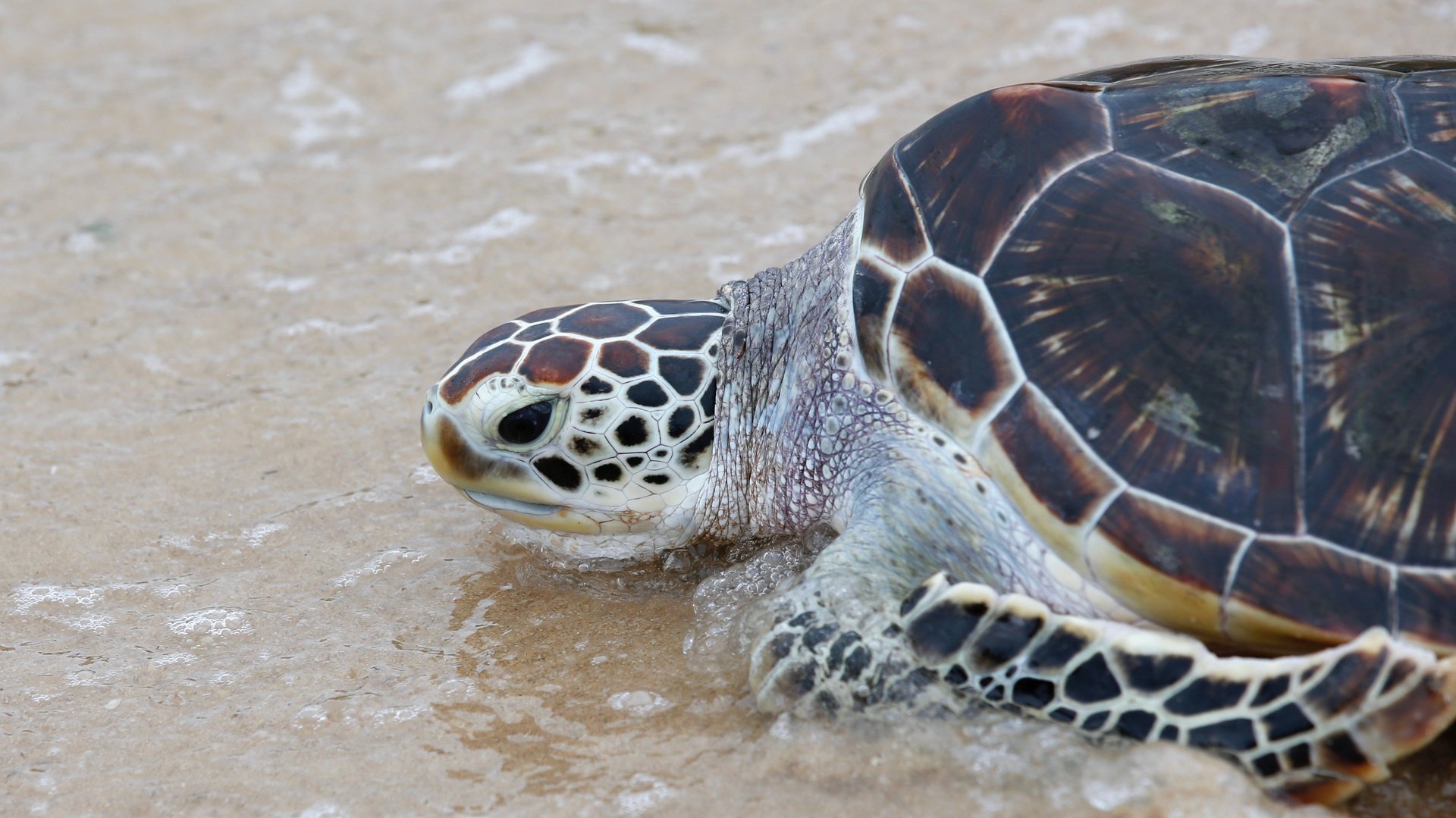Scientists are using turtle and bird DNA to reconstruct dinosaur genes
Please don’t disturb the turtles. They’re doing important work. These adorable creatures are teaching scientists about prehistory, a time when dinosaurs roamed the Earth.


Please don’t disturb the turtles. They’re doing important work. These adorable creatures are teaching scientists about prehistory, a time when dinosaurs roamed the Earth.
A May 21 study in Nature Communications describes how researchers are using turtle and bird DNA to reconstruct the genome of their extinct relatives, dinosaurs. The research team, led by Rebecca O’Conner of the School of Biosciences at Kent University in England, analyzed the chromosomes of birds and turtles to find persistent genetic elements, then traced divergences over time—going all the way back 255 million years ago to a giant lizard—to reconstruct dinosaur DNA.
Based on the many commonalities and slight divergences in chromosome patterns, scientists now think they know what a dinosaur’s genome might look like. Under a microscope, a dinosaur’s genome would resemble that of a modern chicken, duck, ostrich, or a spiny-soft-shelled turtle.
“Our analysis of chromosomes from the [spiny-soft-shelled] turtle genome […] revealed little or no evidence of inter-chromosomal differences between this species and chicken,” the paper states. The team concludes that “a broad overall pattern of genome organisation was in place at least 255 million years ago in the archelosaur ancestor and changed little in the majority of living species.”
The team had to work backwards and extrapolate to reach this conclusion because fossils hint only at the physical structures of extinct creatures; they don’t offer clues as to dinosaurs’ fundamental, genetic elements. Nicole Valenzuela, a professor of ecology, evolution, and organismal biology at Iowa State University and coauthor of the study, explains to Futurity, “Some traits can be observed through fossils and some can’t. The genome structure is one that can’t be preserved, so we have to get creative if we want to figure that out.”
The seeming structural similarities between turtles, birds, and dinosaurs are noteworthy, but they also raise more questions. If birds, turtles, dinosaurs, and giant prehistoric lizards all share a genetic structure, what makes their physical appearance so very different from one another? Why did they evolve to have such distinct traits?
The research team can’t answer that, exactly. They do, however, offer a hypothesis, positing that the genome structure’s survival for 255 million years makes it “a highly successful mode of genome organization that might have provided a blueprint for evolutionary success.” They think that variability—the fact that these chromosome patterns allow for a lot of different traits and combinations—may be the reason the genome structure has persisted so long.
In other words, it seems that in evolution—as in our everyday existence—flexibility and creativity are key to surviving and thriving.